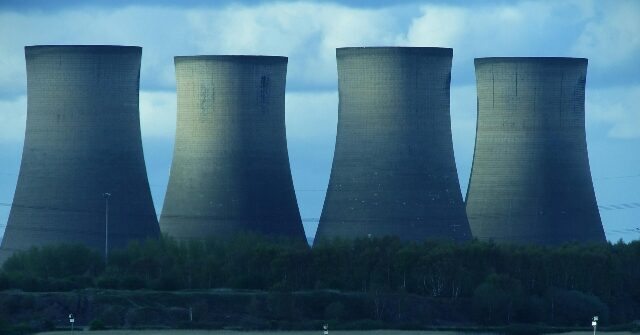Amazon is making significant strides into the nuclear energy sector, particularly focusing on advanced small modular reactors (SMRs) to support the escalating power needs of its data centers across the United States. As the demand for electricity surges—a consequence of rapid advancement in artificial intelligence and data processing—the tech industry, notably companies like Amazon, has identified a pressing need for sustainable, reliable energy sources. According to Forbes, Amazon has entered into partnerships with Dominion Energy, Energy Northwest, and nuclear startup X-energy to launch new power projects aiming to deliver over 5 gigawatts of energy by 2039. This initiative underscores a broader trend wherein technology giants are turning toward nuclear energy as a viable solution to power their expansive and energy-intensive operations.
The urgency of this transition to nuclear power stems from the insatiable appetite of AI-driven data centers for electricity. Amazon Web Services (AWS) CEO Matt Garman highlights nuclear energy as a scalable and cost-efficient option that aligns with carbon-free energy goals. AI-oriented data centers exhibit even more substantial electricity consumption, such as approximately 80 megawatts compared to the 32 megawatts typical for standard data facilities. SMRs are gaining traction due to their smaller size, reduced costs, and quicker construction timelines compared to traditional nuclear plants. Their ability to provide consistent energy around the clock makes them exceptionally suited to meet the continuous operational demands of data centers, especially in a landscape where renewable energy sources like solar and wind may not guarantee reliability.
Despite the promise that SMRs hold, the technology is still in its developmental phase, with none currently operational in the United States. Challenges linger regarding their cost-effectiveness, overall feasibility, and the crucial issue of managing radioactive waste. Nevertheless, the U.S. Department of Energy forecasts a significant increase in nuclear capacity, potentially tripling from 100 gigawatts in 2024 to 300 gigawatts by 2050. This scale-up reflects a national momentum toward decarbonization efforts while ensuring a reliable power supply. Amazon’s collaborative initiatives with Dominion Energy, which focus on developing an SMR plant near its Virginia data centers, and with Energy Northwest in Washington, are vital steps toward integrating nuclear energy into its operational framework.
In conjunction with Energy Northwest, Amazon is taking significant financial steps to realize its vision for nuclear energy. A notable aspect of this collaboration includes Amazon’s commitment to invest $500 million in X-energy, which will aid the development and deployment of SMRs across the United States. The first such project is anticipated to support Dow Chemical in Texas, with plans for Amazon’s own projects to follow closely behind. This partnership emphasizes not only the potential benefits of SMRs in meeting immediate energy demands but also a broader commitment to innovation in the energy sector, showcasing Amazon’s intent to lead in sustainable energy solutions.
Similarly, Microsoft is exploring nuclear energy to meet the growing power demands associated with its AI applications. The company recently made headlines for its agreement with Constellation Energy to revive the historic Three Mile Island nuclear facility in Pennsylvania, which has been offline since 2019. This deal, which represents a substantial investment of approximately $1.6 billion, aims to bring one of the reactors back into service by 2028, thereby providing a reliable, carbon-free energy source for Microsoft’s data centers. The narrative surrounding the revival of Three Mile Island reflects a significant pivot in attitudes toward nuclear energy, particularly as tech leaders grapple with the implications of their energy consumption patterns.
The revival of nuclear plants and the development of advanced modular reactors indicate a transformative shift in energy strategy within the tech industry. It highlights a collective awareness among major corporations of the need for sustainable energy sources amid the complexities of meeting growing electricity demands. As the situation evolves, ongoing investments and collaborations among tech giants, nuclear startups, and utility companies may reshape the energy landscape, potentially mitigating the carbon footprint of data-intensive operations. Both Amazon and Microsoft’s maneuvers illustrate a forward-thinking approach, signaling a renewed interest in nuclear energy that aligns with future environmental goals and the increasing reliance on AI technologies.
In summary, the push toward small modular nuclear reactors represents a paradigm shift in how major corporations are approaching energy utilization in the face of burgeoning technological demands. Through strategic partnerships and significant investments, companies like Amazon and Microsoft are laying the groundwork for a sustainable energy future that leverages innovative solutions to address the immediate and long-term challenges posed by the intersection of technology, data consumption, and environmental responsibility. While hurdles remain, including technological, economic, and regulatory considerations, the trajectory toward integrating nuclear power into the mix could define a critical chapter in the pursuit of sustainable growth in the tech sector.

